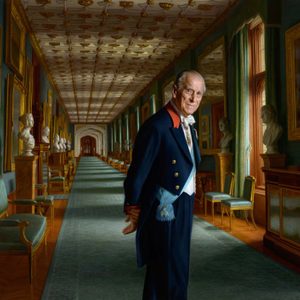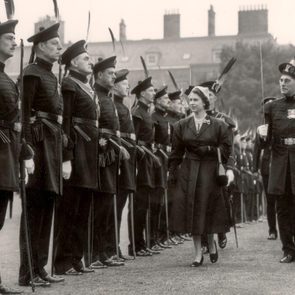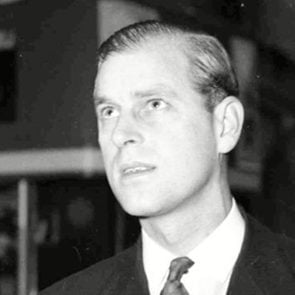Here’s How Reader’s Digest Profiled Prince Philip Back in 1966
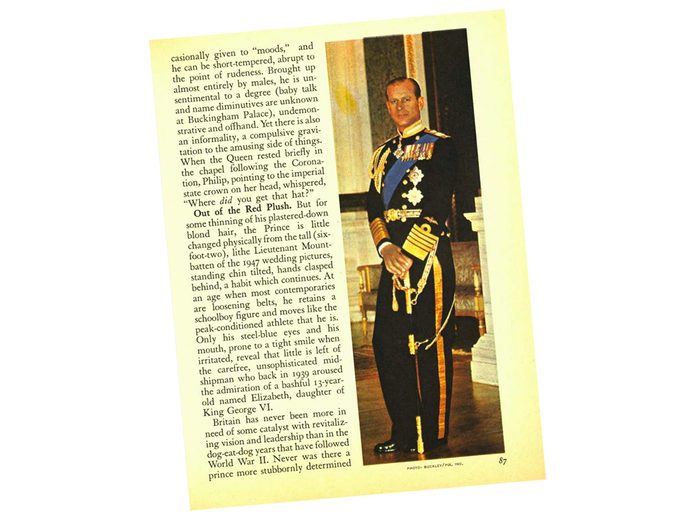
When Prince Philip travelled across the pond back in 1966, Reader's Digest took the opportunity to profile this "champion of youth and enterprise," who "sparks fresh and unorthodox ideas that are revitalizing crown and country." Enjoy the original, unedited feature from the Reader's Digest archives.
Originally published in Reader’s Digest (US), 1966:
It is a safe bet that when His Royal Highness Prince Philip—Duke of Edinburgh, Earl of Merioneth, Baron Greenwich, Knight of the Garter and of the Thistle—visits the United States this March, neither resounding titles nor closeness to the British throne will affect his impact as an individual. He is, in his own right, one of the most stimulating, able, outspoken and controversial figures on the world stage today. And he comes here to do a characteristic job: as guest of Variety Clubs International, a show-business organization that has raised more than go million dollars for sick and crippled children, he will prosper this humanitarian cause via speeches and visits to hospitals and research centres from coast to coast.
The easy manner, the debonair appearance, convey only a fraction of the very human being who, nearly 45 years ago, cropped up on a 1,000-year-old family tree cross-fertilized by Europe’s noblest blood strains. Born a Greek prince on the island of Corfu, he has no Greek blood but bears a royal heritage from both Queen Victoria of England and Christian IX of Denmark. From the Mountbatten side (his uncle, Victoria’s great-grandson, is the redoubtable Earl Mountbatten of Burma) come brains, looks, personality, versatility and a pile-driving ambition to excel. At Gordonstoun School in Scotland, and later at Dartmouth Naval College, he ranked high in his class and was a champion athlete. At 19, he was cited for performance in battle action, later skippered one of the most efficient ships in the Mediterranean Fleet, rose to the rank of commander at the precocious age of 31.
To compensate for such rich endowment, he has the normal share of human weaknesses. He is occasionally given to “moods,” and he can be short-tempered, abrupt to the point of rudeness. Brought up almost entirely by males, he is unsentimental to a degree (baby talk and name diminutives are unknown at Buckingham Palace), undemonstrative and offhand. Yet there is also an informality, a compulsive gravitation to the amusing side of things. When the Queen rested briefly in the chapel following the Coronation, Philip, pointing to the imperial state crown on her head, whispered, “Where did you get that hat?”
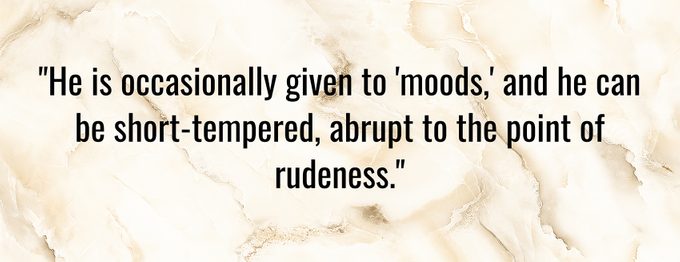
Out of the Red Plush
But for some thinning of his plastered-down blond hair, the Prince is little changed physically from the tall (six-foot-two), lithe Lieutenant Mountbatten of the 1947 wedding pictures, standing chin tilted, hands clasped behind, a habit which continues. At an age when most contemporaries are loosening belts, he retains a schoolboy figure and moves like the peak-conditioned athlete that he is. Only his steel-blue eyes and his mouth, prone to a tight smile when irritated, reveal that little is left of the carefree, unsophisticated mid-shipman who back in 1939 aroused the admiration of a bashful 13-year- old named Elizabeth, daughter of King George VI.
Britain has never been more in need of some catalyst with revitalizing vision and leadership than in the dog-eat-dog years that have followed World War II. Never was there a prince more stubbornly determined to serve her meaningfully. His travels to the far reaches of five continents have been a boon to Britain; they have strengthened ties and, to lonely people in lands resigned to being overlooked, emphasized the crown’s intimate preoccupation with their welfare.
Philip’s most remarkable achievement, however, is that, almost single-handed, he has succeeded in detaching the British crown from the immemorial aloofness of its red-plush frame, and without sacrificing an atom of its dignity. Today it stands as the symbol of a young and vibrant force, attuned to the heartbeat of a Commonwealth numbering more than 700 million people.
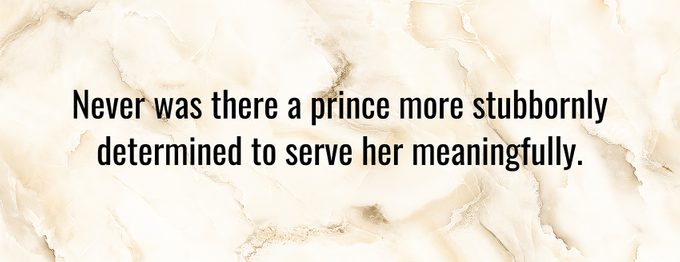
On the Run
The princely energy is next to inexhaustible, which is fortunate considering his range of interests and nightmare number of day-by-day engagements. These are drawn up regularly on big cardboard sheets in a colour-coded mosaic. Should you ask him for dinner, should he be eager to accept, the first free date he could give you would be three months hence.
Ill or well, tired or spry, he must keep each engagement on the dot or disappoint hundreds, sometimes thousands, of people. Far from keeping down his work load, however, Philip is forever adding to it. If a free hour shows up on the agenda, he probes compulsively for a stop-gap—a quick visit to a community playground, an industrial centre, to London’s Wool Exchange to brief himself on the newest techniques. Occasionally he will let off steam in a game of polo, thundering his mounts across the field like battering rams. “It isn’t his cars he drives too fast,” said an observer. “It’s himself.”
The day begins at 8 a.m., ends around midnight, and may involve hundreds of miles of travel. Should he arrive at a destination ahead of guests and welcoming committees, he zeroes in on anybody handy—bricklayer, accountant, janitor. Few are better informed than he on what the man in the street is thinking.
When speeches are indicated, the Prince painstakingly researches his own material, writes his own scripts, frequently delivers them from memory. A light touch, crisp diction and that midnight-oil knowledge of his subject have made him one of the most sought-after speakers in the Commonwealth. Diehards may assail his subject matter as “inappropriate” or “ill-advised,” but in the 19 years of his marriage to Queen Elizabeth no one has accused the Prince of being dull.
He is seldom at a loss for the right word. At one meeting, when a man thrust his Ph.D. wife forward, explaining, “She’s much more important than I am,” Philip replied kindly, “We have the same problem in our family.”
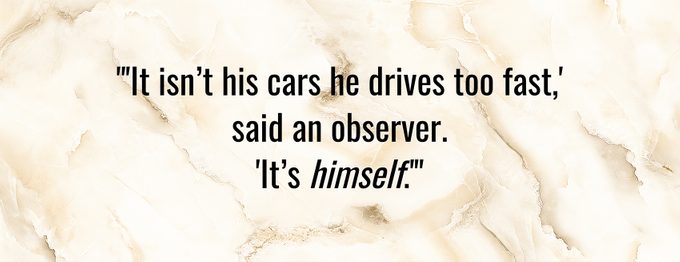
Shot in the Arm
While a sovereign’s duties have been meticulously blueprinted down the ages, a male consort has no constitutional function and, aside from siring heirs, no assigned responsibilities. Traditionally, his power to act and speak has been hedged by unwritten don’ts: don’t butt into state affairs or anything controversial; don’t try to influence the Queen; don’t move from the background; don’t rise above a rubber stamp.
It says much for Prince Philip’s resourcefulness that he has managed to convert this negative status into so many positive, action-packed endeavours. He has invested the consort role with purpose, and has made himself Britain’s No. 1 shot in the arm in widely separated fields.
British industry is immeasurably in his debt. The “scepter’d isle” has been slow to face the fact that modern competition poses a paralyzing threat; that handcrafted luxuries, styles and designs from Edwardian times have ceased to rule the trade waves. The Prince has been hailed as Britain’s “most valuable single asset,” for he is revitalizing her will to fight back for lost markets, helping to reawaken the genius of inyentors, scientists and researchers. “It’s no good,” he has said, “shutting your eyes and saying, ‘British is best!’ and expecting it to be so.”
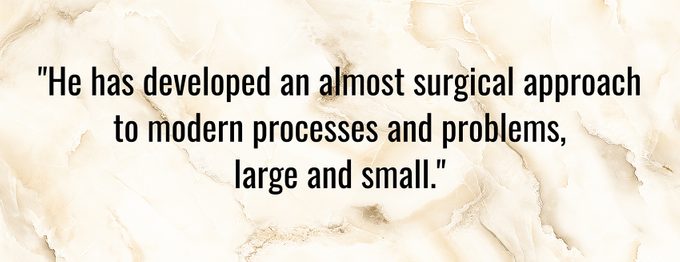
Do-It-Yourself
Philip does more than merely talk recovery; he involves himself in plans and enterprises. Among the more than 45 organizations that he heads is the Council of Industrial Design. The Council’s seal of approval has triggered experimental daring among young designers. The Prince keeps track of (sometimes tests personally) each uncommon item—a new-fangled push-bike powered by mini-wheels; fireproof textiles; built-for-the-ages airplane luggage.
Not for Philip the conventional royal reflex—“Most interesting!” “Very praiseworthy!”—as eyes rove blankly over incomprehensible machinery during official visits. Aided by long experience and an abnormal curiosity concerning what makes anything tick, he has developed an almost surgical approach to modern processes and problems, large and small.
He has been known to unnerve chauffeurs, unaccustomed to royal do-it-yourselfers, by peeling off his coat and figuring out what ails the motor. He has lent furniture movers a hand, learning the professional way of shifting loads. He is an expert airplane pilot, with 1,500 hours of flying time to his credit. He is also a certified ship’s stoker, a distinction earned when, following a below-decks walkout aboard a wartime troopship, he volunteered for coal-shovelling duty. He stuck it out, shift by sweltering shift, from Puerto Rico to Newport News.
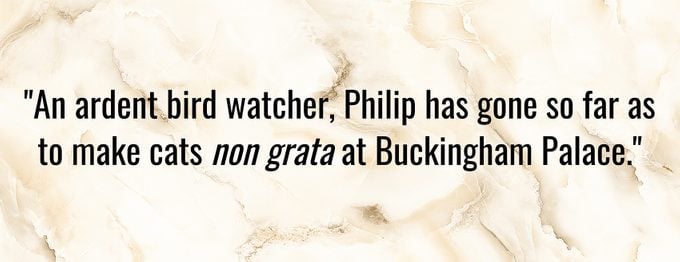
Youth and Conservation
Tens of thousands of young people look on Philip as their special property. Genuinely fond of youngsters, he has for years infected British teenagers with an awareness of oncoming responsibility. His Duke of Edinburgh’s Award Scheme is beamed at boys and girls, age 14-20, who are at loose ends. Headed by Sir John Hunt, hero of Mt. Everest, activated by voluntary committees all over the country and in many Commonwealth countries, the Scheme encourages public service, hobbies, fitness and expeditions. Self-reliance is the keynote. Some 130,000 young people have won awards.
As president of the National Playing Fields Association, Philip has set as his goal playgrounds not more than 500 yards apart in built-up areas, six acres or more of recreational space for every 1,000 inhabitants. His fund-raising campaigns have succeeded in increasing elbow-room to the extent of 2,124 football fields, 1,700 cricket grounds, 2,058 tennis courts, plus innumerable gyms, field houses and parks. His promise to “go anywhere to open a new playground” has been kept.
The worldwide despoiling of animal wildlife provoked Prince Philip into accepting the British presidency of the World Wildlife Fund. An ardent bird watcher, Philip has gone so far as to make cats non grata at Buckingham Palace.
To help launch America’s World Wildlife Fund some years ago, he interrupted a Vancouver-London flight to speak at a New York City dinner. After documenting the plight of game in faraway jungles, he let fly, “In case you’re feeling a bit smug, let me remind you that the passenger pigeons that once darkened your skies and the bison that covered your plains have been callously exterminated, and that even the bald eagle, proud emblem of this mighty country, is being chased and killed from airplanes by people who think it is smart to have its feathers and claws.”
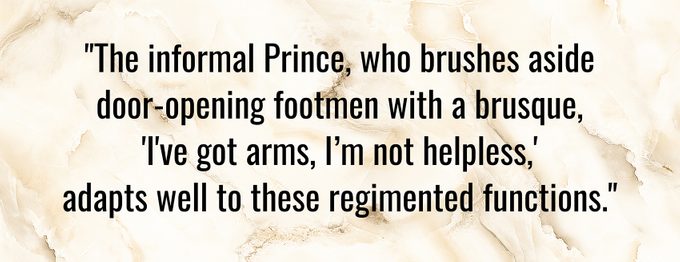
Polished Performance
The activity in which the public usually visualizes royalty is the formal occasion—an endless round of banquets, tree plantings, cornerstone layings, openings of charitable institutions, agricultural and industrial shows, presentations of honours and awards. These appearances are all-important because they demonstrate the crown’s unwavering interest in the nation’s life.
Most thrilling are the red-carpet affairs attended by heads of state, diplomats, top military brass. Whether Philip participates simply as the Queen’s escort (as at the opening of Parliament) or alone as her official representative abroad, the form is equally rigid. It calls for a sartorially resplendent Prince in full-dress uniform, agleam with decorations. His bearing, grace and elegance will reflect the pride and dignity of Britain.
Oddly enough, the informal Prince, who brushes aside door-opening footmen with a brusque, “I’ve got arms, I’m not helpless,” adapts well to these regimented functions. Like the Queen, he carefully observes protocol, as well as the code of politeness which prescribes that a consort must always stand a pace or two behind the Sovereign.
Alone or together, the royal pair take immense pride in giving a polished performance. Royal fluffts are rare—none since that distant day when the Prince appeared in the wrong uniform for a parade. Even as he chats affably with a welcoming committee, Philip’s quarterdeck eye will be noting the layout. It will be his toe that nudges back a chair informally lined up with Her Majesty’s. He checks if microphones are too high, lights too blinding, photographers too close. Always a step or two behind, telepathically aware of Elizabeth’s requirements, he may point out some feature that she missed, adroitly disengage her from a bore, detain the reception line with some gay pleasantry if she is crowded. His unobtrusive support is so constant that a veteran, steeped in five reigns of the red-carpet routines, recently remarked, “Can’t think how we ever got along without him.”
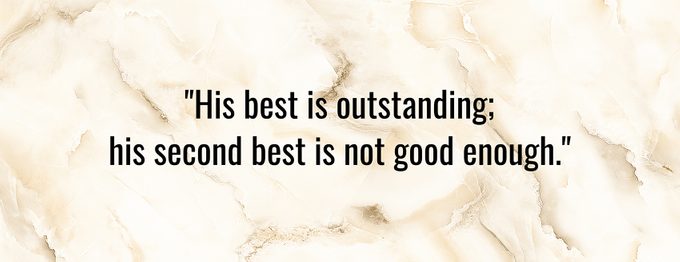
Family Man
The law that an Englishman’s home is his castle applies mainly to those not inhabiting castles. The public has a ravenous interest in the First Family’s home life, and Prince Philip must battle to reserve this area. Reporters gather backstairs gossip from vendeuses (who reveal that young Prince Andrew tried on his mother’s hats during a fitting), from footmen (who collided with royal tricycles in sacrosanct state apartments), from tradesmen in pubs.
The family circle, a lively, well-adjusted one, means much to Philip, who as a boy was shunted from relative to relative. He is a casual but faithful and devoted husband; his unpredictable compliments and endearments still make the Queen’s eyes shine with pleasure. He takes pride in their four children (Charles, 17; Anne, 15; Andrew, 6; Edward, almost 2), and lets nothing interfere with the time set aside daily for their companionship. He delights in teaching them to ride, groom their own horses, swim, sail, box, birdwatch.
Both parents are old-fashioned disciplinarians. Spankings, though rare, have followed out-of-line behaviour; politeness and obedience are required at all times. Family decisions are arrived at jointly, such as the precedent-shattering one to let the children experience the give-and-take of boarding schools, even one as far away as Australia.
Thirty years ago, Philip’s headmaster, bringing him to the attention of the Admiralty as a “born leader,” wrote: “Prince Philip will need the exacting demands of a great Service to do justice to himself. His best is outstanding; his second best is not good enough.” The service the headmaster had in mind was the Royal Navy. The one to which the Prince was eventually called has proved considerably more exacting. But, to his credit, not once has it been noted that he has settled for second best. His overall performance must indeed be called “outstanding.”
Next, find out about Prince Philip’s special relationship with Canada.
